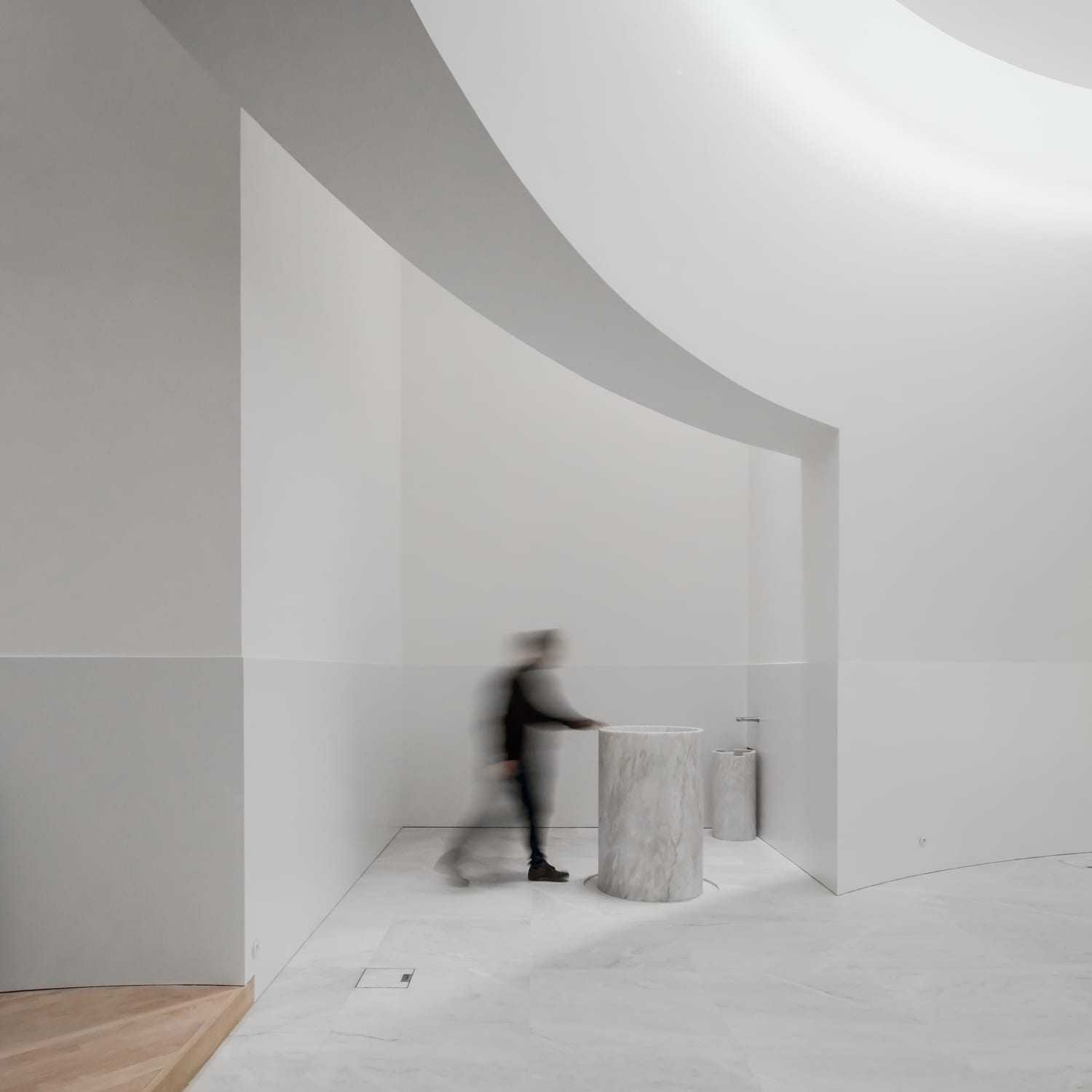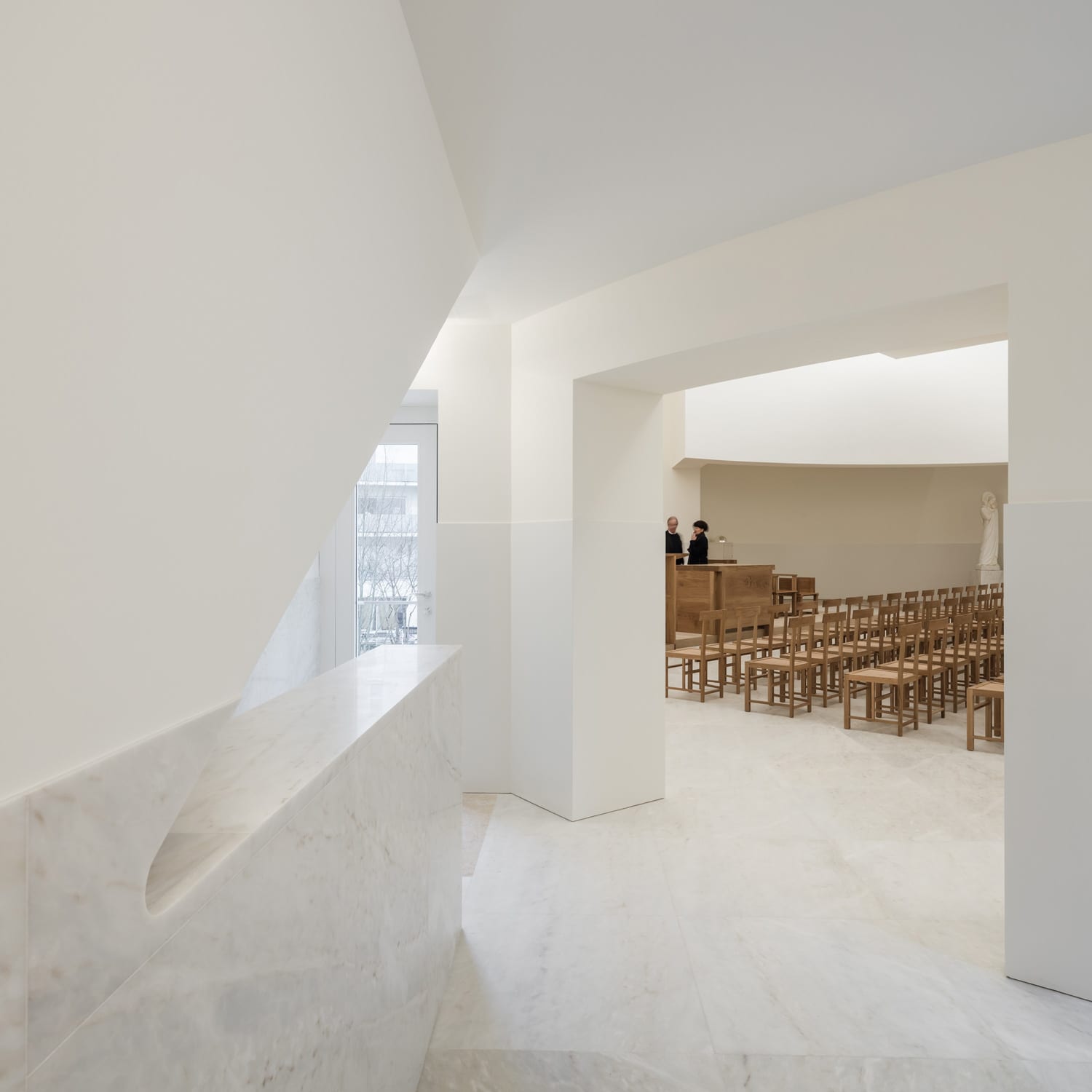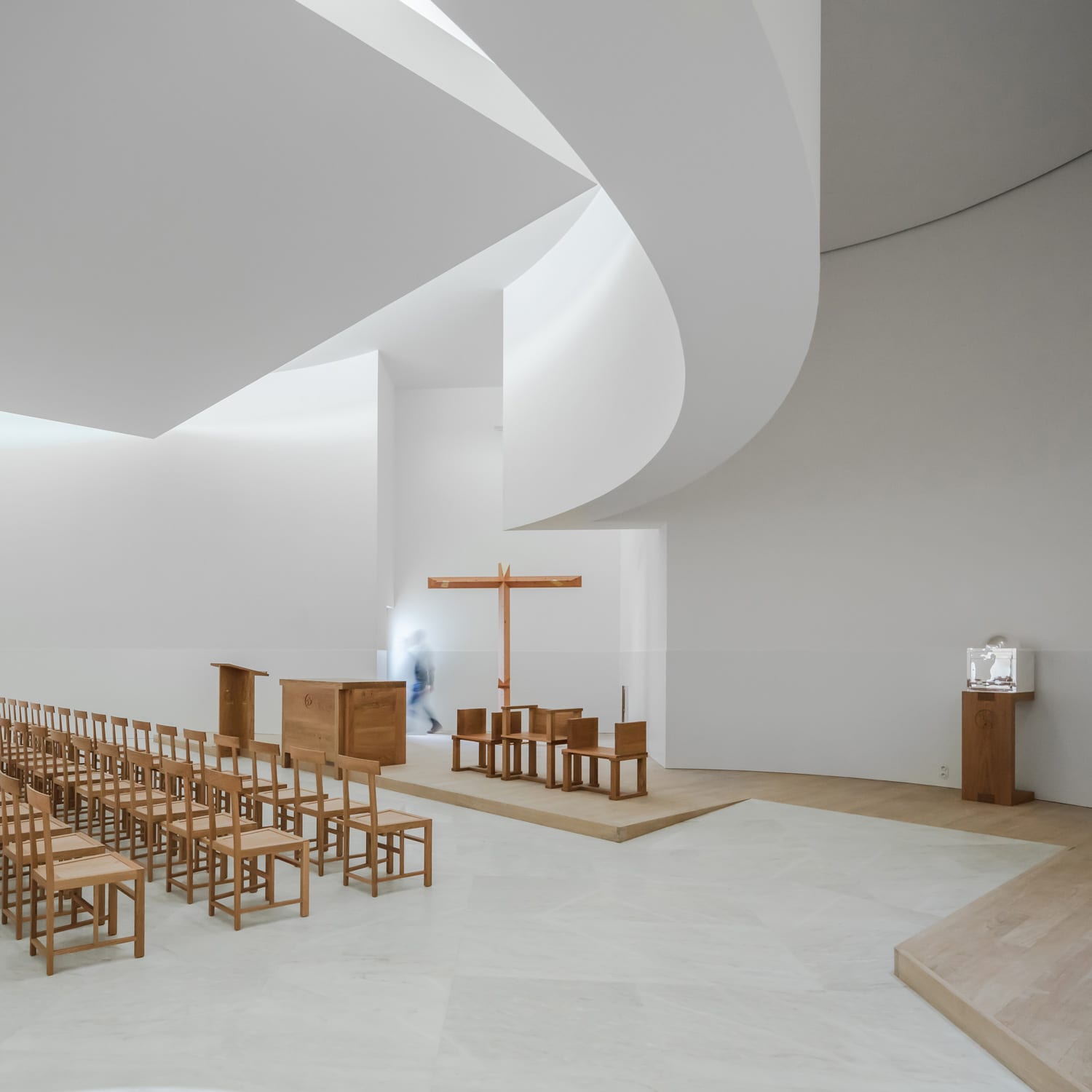#HTE




Rennes isn’t really known for its contemporary architecture. I lived in Brittany’s capital city for a short 12 months, and while the sprawling Saturday produce markets (Marché des Lices) are surrounded by charming 15th century timber frame apartments that all lean a little precariously; and there are grand and romantic 18th century civil buildings and Gallo-Roman ruins from the 3rd century too, the city’s charm as I know it to be is all cheese and wine, quiet green gardens, and cider and cobblestones.
Recently, however, Rennes’ city centre became home to a Jean Nouvel apartment block. And now, Pritzker Prize-winning Portuguese architect Alvaro Siza Vieira has designed a beautiful, light-filled church for Rennes’ outer suburbs.
The church at Saint-Jacques-de-la-Lande will be the first church built in Brittany in the 21st-century. From the outside, it’s a chalky-white sculptural concrete turret pitched within an enclave of boxy, 60s-era 5-storey suburban walkups. Made up of a cylindrical entrance atrium flanked by two rectangular volumes, there’s a certain alienness to the structure at a glance—though it has been intended to merge with its residential setting.
See more projects by Alvaro Siza Vieira on Yellowtrace.






Like other great spiritual architecture, for Saint-Jacques-de-la-Lande, Alvaro has played with volume and natural light to create a sense of serenity and peace from within. The parish’s program is spread over two floors, with administrative and social spaces on the ground floor, and a hall for 120 people on the upper floor. Where the building’s rectangular shapes intersect with the cylindrical congregation hall, Alvaro’s geometry creates a series of nooks, each cleverly lit from above.
Floors are paved in brilliant white marble, which continues upward onto the walls and forms a textural datum around each room. Rows of timber chairs and a timber crucifix add warmth to the space. And separate to the main building are two great brass bells, hung between two slabs of the same white concrete.
Words by Sammy Preston.
Related: Stories On Design// Take Me To Church.









































[Photography by João Morgado.]
The post Alvaro Siza Vieira’s New Church of Saint-Jacques de la Lande in Rennes, France. appeared first on Yellowtrace.
http://www.yellowtrace.com.au/alvaro-siza-vieira-new-church-rennes-france/
